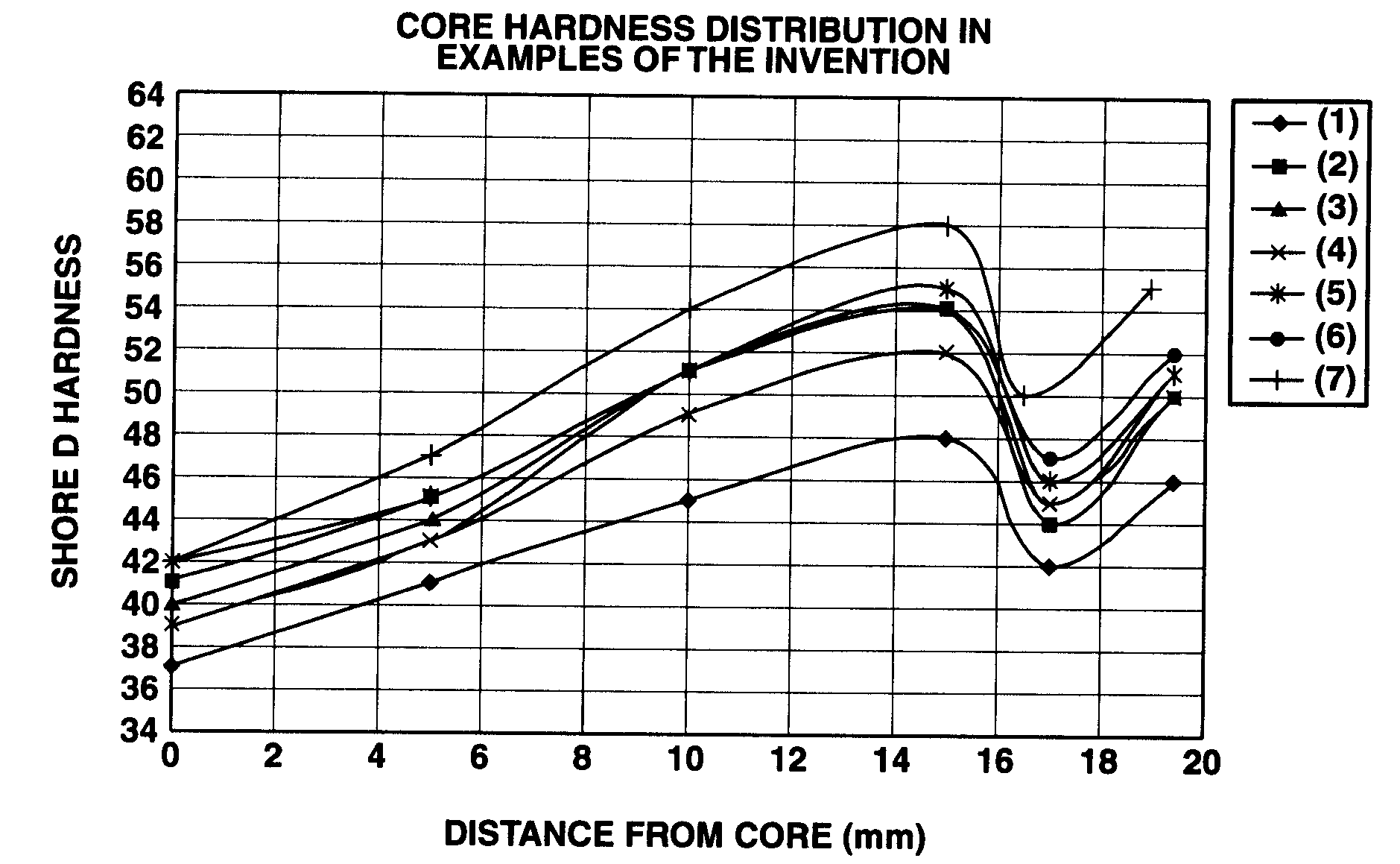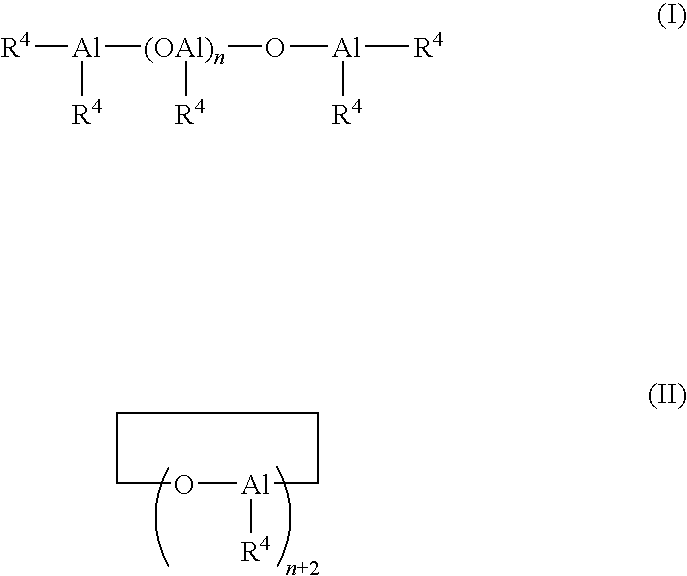Solid golf ball
a golf ball and solid technology, applied in the field of solid golf balls, can solve the problems of lack of resilience, poor scuff resistance of resin from which the cover is formed, and poor spin performance of the ball, so as to improve the hardness distribution, soften the core surface, and optimize the effect of core hardness distribution
- Summary
- Abstract
- Description
- Claims
- Application Information
AI Technical Summary
Benefits of technology
Problems solved by technology
Method used
Image
Examples
examples
[0128]The following Examples of the invention and Comparative Examples are provided by way of illustration and not by way of limitation.
examples 1 to 9
, and Comparative Examples 1 to 8
[0129]In each example, a solid core was produced by preparing a core composition having one of formulations No. 1 to No. 13 shown in Table 3, then molding and vulcanizing the composition under the vulcanization conditions in Table 3. Next, a single-layer cover was formed by injection-molding one of formulations a, b, c or d shown in Table 4 about the core, thereby encasing the solid core within a cover. In addition, a plurality of dimple types were used in combination, giving a solid golf ball having 330 dimples (Configuration I), 432 dimples (Configuration II), or 500 dimples (Configuration III) on the ball surface.
[0130]In the examples of the invention and the comparative examples in which cover formulations a and b were used, the starting materials shown in Table 4 (units: parts by weight) were worked together under a nitrogen gas atmosphere in a twin-screw extruder, thereby giving cover resin blends. These resin blends were in the form of pellets...
PUM
 Login to View More
Login to View More Abstract
Description
Claims
Application Information
 Login to View More
Login to View More - R&D
- Intellectual Property
- Life Sciences
- Materials
- Tech Scout
- Unparalleled Data Quality
- Higher Quality Content
- 60% Fewer Hallucinations
Browse by: Latest US Patents, China's latest patents, Technical Efficacy Thesaurus, Application Domain, Technology Topic, Popular Technical Reports.
© 2025 PatSnap. All rights reserved.Legal|Privacy policy|Modern Slavery Act Transparency Statement|Sitemap|About US| Contact US: help@patsnap.com



